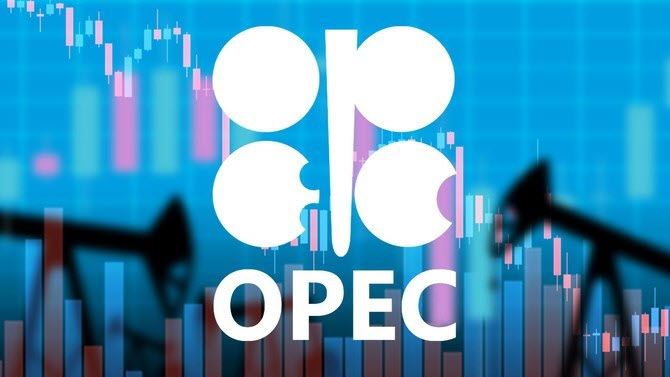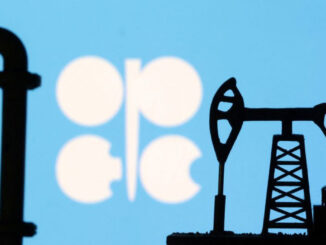
To get Platts OPEC+ survey sooner, join Platts Dimensions Pro.
OPEC and its Russia-led allies hiked crude oil production by 390,000 b/d in June, according to the latest Platts survey by S&P Global Commodity Insights, though almost all members continued to struggle to hit their output targets.
OPEC’s 13 members pumped 28.83 million b/d in June, up 210,000 b/d from May, with steady gains posted by Saudi Arabia, Nigeria, Angola and the UAE.
Meanwhile, the nine countries partnering with the producer group produced 13.26 million b/d, a rise of 180,000 b/d, amid a recovery in Russian output, which offset major maintenance in Kazakhstan.
Combined, OPEC+ crude production rose to a three-month high of 42.09 million b/d of June, the survey found.
Several members have been consistently facing supply disruptions in 2022 caused by sanctions, geopolitical instability, unplanned outages, scheduled maintenance and technical issues.
In June, the coalition underproduced its collective targets by 2.70 million b/d, with quota compliance surging to a hefty 192%, according to S&P Global calculations.
The big two
The alliance’s two biggest producers — Russia and Saudi Arabia — added a combined 560,000 b/d to the market, albeit in different circumstances.
Despite a barrage of Western sanctions on Russia after its invasion of Ukraine, the key OPEC ally saw its output recover by almost 500,000 b/d in June, according to the survey.
Russia pumped 9.75 million b/d in June compared with 9.29 million b/d in May and 9.14 million b/d in April, the survey showed. The June figure is still, however, 913,000 b/d below its production quota, indicative of the sharp decline in Russian output from prewar levels.
Exports of Russian crude fell modestly in June, but its domestic demand rose steadily, survey panelists said.
Russia also ramped up deliveries to China and India, as buyers there took advantage of price discounts.
Saudi Arabia raised its output to 10.55 million b/d in June, prompted by a surge in summer crude burn.
However, that is still around 110,000 b/d below its quota of 10.66 million b/d, the survey found.
Exports were largely stable, but the kingdom significantly built up its crude inventories while the Ras Tanura refinery was on partial maintenance, survey panelists said.
Outages persist
Only four countries saw a fall in output in June, but two of these posted weighty declines.
The biggest drop was observed in non-OPEC producer Kazakhstan, which saw its output dip to 1.22 million b/d, a fall of 300,000 b/d from May.
Kazakhstan’s second-highest producing oil field, Kashagan, was offline due to a major planned maintenance turnaround scheduled to be completed by July 15.
The Central Asian country could see further disruptions this month because of a Russian court dispute involving the Caspian Pipeline Consortium, which is the operator of the loading facility from which its key export grade CPC Blend is shipped.
Libyan supply disruptions escalated further in June, caused by more blockades and shutdowns in its key oil infrastructure. Crude output slumped to 650,000 b/d, its lowest since October 2020, as the country’s political crisis is now affecting a large chunk of its oil supply.
Libya is exempt from a quota under the OPEC+ deal, as are Iran and Venezuela, both of which had steady production in June.
Iraq, OPEC’s second-biggest producer, saw its output slip to 4.38 million b/d last month despite a rise in federal exports. Flows from the semi-autonomous Kurdistan region were down, however, and the country dipped into a large chunk of its crude inventories in June, data showed.
Africa’s two largest oil producers — Nigeria and Angola — added 70,000 b/d and 60,000 b/d respectively in June, but both remain way below their production quota.
Road ahead
The OPEC+ alliance has been gradually raising its quotas each month, with the aim of restoring output to pre-pandemic levels by August.
However, the quota underperformance has drawn the ire of consuming countries, including the US, which has repeatedly called on the producer group to supply more crude. However, that capability is largely limited to Saudi Arabia and the UAE, which hold almost all of the group’s remaining spare capacity.
US President Joe Biden is scheduled for a trip to Saudi Arabia July 14-16 for a meeting with Gulf leaders, where the oil market is expected to be a subject of discussion.
The OPEC+ alliance itself will meet Aug. 3 to decide on production levels for September and possibly beyond. As it is, the OPEC+ agreement calls for August quotas to remain frozen through the end of the year.
The survey figures, which measure wellhead production, are compiled using information from oil industry officials, traders and analysts, as well as reviewing proprietary shipping, satellite and inventory data.
| OPEC+ crude production | |||||
| OPEC | 22-Jun | Change | 22-May | June Quota | Compliance |
| Algeria | 1.02 | 0.01 | 1.01 | 1.023 | 108.80% |
| Angola | 1.22 | 0.06 | 1.16 | 1.48 | 641.70% |
| Rep of Congo | 0.29 | 0.01 | 0.28 | 0.315 | 350.00% |
| Equatorial Guinea | 0.10 | 0.00 | 0.10 | 0.123 | 675.00% |
| Gabon | 0.19 | 0.01 | 0.18 | 0.181 | -50.00% |
| Iraq | 4.38 | -0.01 | 4.39 | 4.509 | 143.90% |
| Kuwait | 2.72 | 0.03 | 2.69 | 2.724 | 101.70% |
| Nigeria | 1.30 | 0.07 | 1.23 | 1.772 | 928.10% |
| Saudi Arabia | 10.55 | 0.10 | 10.45 | 10.663 | 113.50% |
| UAE | 3.08 | 0.05 | 3.03 | 3.075 | 98.80% |
| OPEC MEMBERS WITH QUOTAS | 24.85 | 0.33 | 24.52 | 25.865 | 152.10% |
| EXEMPT MEMBERS | |||||
| Iran | 2.58 | 0.00 | 2.58 | exempt | exempt |
| Libya | 0.65 | -0.12 | 0.77 | exempt | exempt |
| Venezuela | 0.75 | 0.00 | 0.75 | exempt | exempt |
| TOTAL OPEC | 28.83 | 0.21 | 28.62 | n/a | n/a |
| NON-OPEC | 22-Jun | Change | 22-May | June Quota | Compliance |
| Azerbaijan | 0.58 | 0.01 | 0.57 | 0.696 | 627.30% |
| Bahrain | 0.18 | 0.01 | 0.17 | 0.199 | 416.70% |
| Brunei | 0.07 | -0.01 | 0.08 | 0.099 | 1066.70% |
| Kazakhstan | 1.22 | -0.3 | 1.52 | 1.655 | 905.60% |
| Malaysia | 0.40 | 0.00 | 0.40 | 0.577 | 1083.30% |
| Oman | 0.85 | 0.01 | 0.84 | 0.855 | 117.90% |
| Russia | 9.75 | 0.46 | 9.29 | 10.663 | 209.10% |
| Sudan | 0.06 | 0.00 | 0.06 | 0.073 | 750.00% |
| South Sudan | 0.15 | 0.00 | 0.15 | 0.126 | -500.00% |
| TOTAL NON-OPEC | 13.26 | 0.18 | 13.08 | 14.943 | 272.80% |
| OPEC+ MEMBERS WITH QUOTAS | 38.11 | 0.51 | 37.6 | 40.808 | 192.30% |
| TOTAL OPEC+ | 42.09 | 0.39 | 41.7 | n/a | n/a |
| Unit: million b/d | |||||
Source: Spglobal.com



